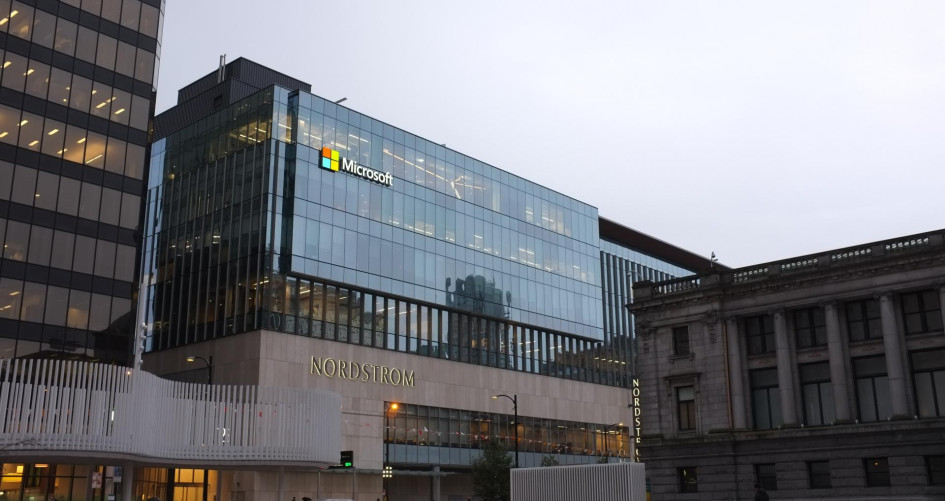Microsoft will be carbon negative by 2030. By 2050, Microsoft will remove from the environment all the carbon the company has emitted either directly or by electrical consumption since it was founded in 1975.
Microsoft’s carbon negative commitment is part of a long history of ambitious targets and actions to reduce GHG emissions. In 2009, Microsoft set its first GHG emissions target: a 30% reduction from 2007 levels by 2012. Microsoft has operated carbon neutral since 2012. Like many companies, its neutrality commitment relied on investing in offsets that paid others to not emit carbon, instead of removing carbon dioxide.
The science, and the social and economic impacts of climate change, drove the company to conclude that being carbon neutral alone is not enough—leading to its carbon negative commitment in 2020. Historically, Microsoft focused on Scope 1 emissions (direct emissions from owned or controlled sources) and Scope 2 emissions (indirect emissions from the generation of purchased electricity, steam, heating and cooling consumed by the company). Scope 3 includes all other indirect emissions that occur in a company's value chain. That’s why the company is now committing to becoming carbon negative for 2030 for all three Scopes.
Key facts
- With its internal carbon fee funds, the company has purchased over 30 billion kilowatt-hours (kWh) of green power, reduced its emissions by 20 million metric tons of carbon dioxide equivalent, positively impacted over 8.2 million people in emerging nations through carbon offset community projects, and saved more than USD 10 million per year.
- In 2020, Microsoft maintained 100% green power usage across its U.S. operations for the 6th consecutive year. Microsoft has been ~95% powered by renewable energy since 2013 and has a long history of driving market development through innovative off-site, long-term contracts.
- Microsoft’s Climate Innovation Fund, launched in 2020, commits to invest USD 1 billion over four years into new technologies and expand access to capital around the world to people working to address the climate challenge.
The challenge
The science is clear—to avert the worst effects of the rapidly changing climate, the world needs to transition to a net zero carbon emissions economy by 2050. To reach net zero emissions, the world must prioritize making deep emissions reductions across all sectors, cutting carbon emissions in half over the next 10 years.
The solution
Like many companies, Microsoft’s climate neutrality commitment relied on investing in offsets that paid others to not emit carbon, instead of removing carbon dioxide. The science, and the social and economic impacts of climate change, drove the company to conclude that carbon neutral alone is not enough—leading to its carbon negative commitment in 2020.
Its goal not only commits that by 2030 Microsoft will be carbon negative, it also pledges that by 2050 Microsoft will remove from the environment all the carbon the company has emitted either directly or by electrical consumption since it was founded in 1975. This Microsoft target is additionally innovative because it is the first corporate target to commit to removing historic emissions – essentially neutralizing the company’s impact on the climate since its founding. In this way, the target goes beyond aligning with the science of global emission reduction pathways. It introduces the concept of climate justice and equity into corporate GHG targets by expanding the boundary of responsibility from solely forwarding-looking to incorporating both historic and future actions.
Helping people
Microsoft recognizes that climate and environmental issues do not affect all communities equally and so it has embraced environmental equity as a priority. In June 2020, it announced a new innovative partnership with Sol Systems (a renewable energy developer and investor that invests in communities disproportionately affected by environmental challenges) to procure 500 megawatts (MW) of renewable energy. This is one of Microsoft’s single largest renewable energy portfolio investment (500MW would power more than 70,000 homes in the U.S. per year). Its work with Sol Systems is a first-of-its-kind initiative to tie renewable energy procurement to environmental justice and equity in under-resourced communities.
Spillover effect
To further scale innovation, Microsoft is putting its balance sheet to work accelerating existing technology and investing in the innovation of new technologies to help the company and the world reach net zero emissions. Its Climate Innovation Fund, launched in 2020, commits to invest USD 1 billion over four years into new technologies and expand access to capital around the world to people working to solve this problem.
Microsoft’s transformational partnerships make its carbon negative program not simply replicable but also actionable. Microsoft is a founding member of Transform to Net Zero, launched in July 2020. This small group of established leaders aims to demonstrate and enable the business transformation needed to achieve net zero emissions by 2050, in addition to driving broader change with a focus on policy, innovation, and finance.




Images owned by the activity partners, all rights reserved.





